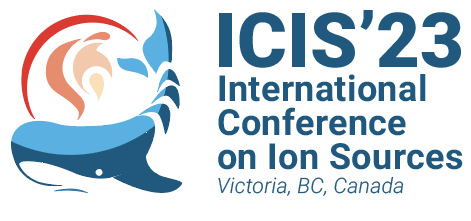Speaker
Description
The production of negative ions in caesium sputter ion sources occurs on the surface of a cathode, which contains the ionized material and is covered by a thin layer of caesium that enhances the negative ion yield by lowering the work function. We have recently demonstrated that the negative ion beam currents can be enhanced by exposing the ion source cathode to a laser beam [1-3]. In this paper, we present new results on the laser-assisted enhancement of Br$^-$ beam current. These results have been obtained by systematically varying the ion source parameters, most importantly the ionizer and Cs oven temperatures, and measuring the effect of a 15 W, 445 nm laser on the beam current with different cathode holder materials (Al, Ti, Ni, C or Cu). We discuss two findings that are relevant for the ion source operation. First, it is shown that the laser allows reaching higher beam currents at low ionizer temperatures compared to running the source without the laser but at higher ionizer temperature. Second, we sometimes observe a "priming effect", i.e. applying a number of laser pulses at certain ion source settings causes the beam current measured without the laser to increase significantly and remain high after ceasing the laser pulsing. These observations suggest that the photo-assisted effect is related to changes of the cathode caesium coverage. Finally, we report the results of our first attempts to sustain a stable beam current at the elevated level, achieved through active control of the laser power. This last experiment is relevant for applications of the caesium sputter source, e.g. in accelerator mass spectrometry.
REFERENCES:
1. Tarvainen O et al 2020 J. Appl. Phys. 128 094903
2. Tarvainen O et al 2021 AIP Conf. Proc. 2373 020001
3. A Hossain et al 2022 J. Phys. D: Appl. Phys. 55 445202
| Email Address | akbar.a.hossain@jyu.fi |
|---|---|
| I have read the Code of Conduct to attend ICIS2023. | Yes |

